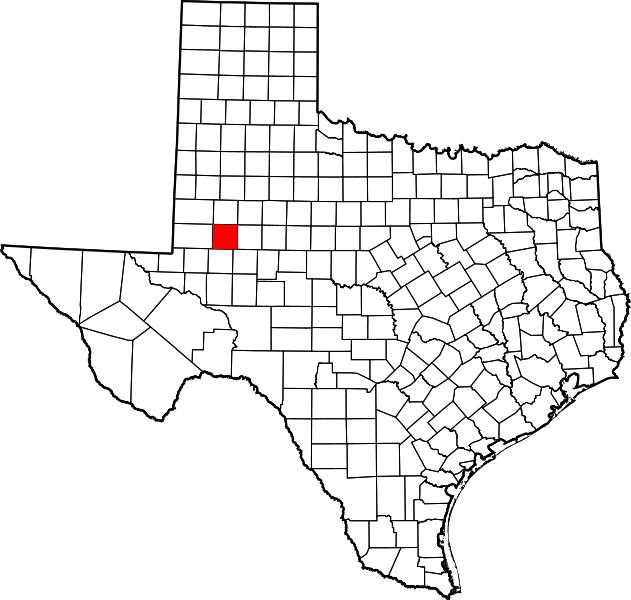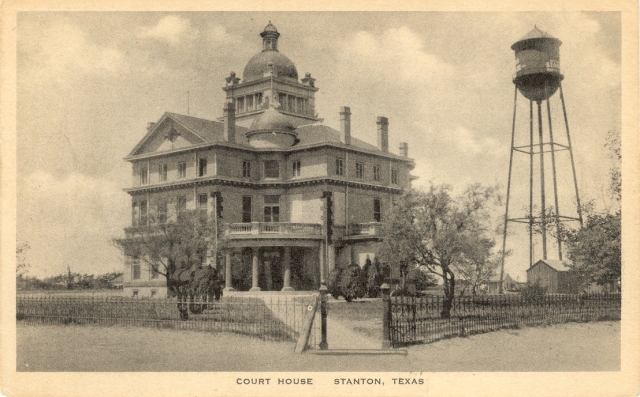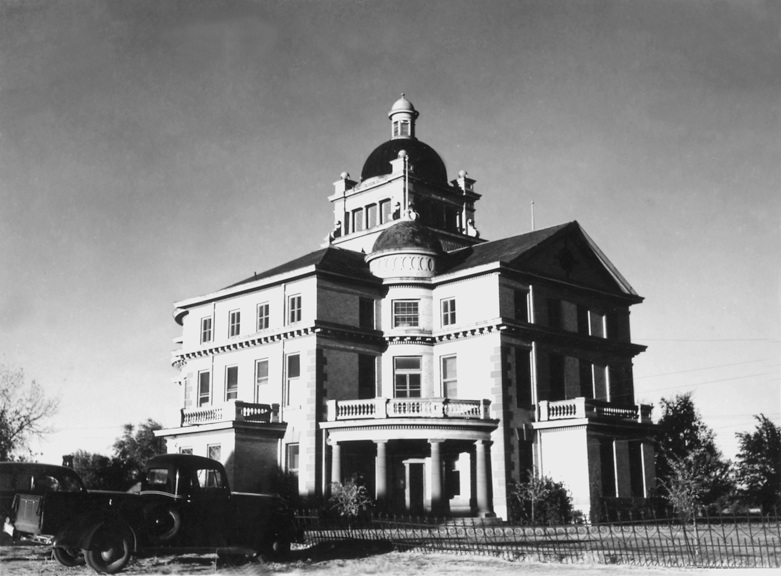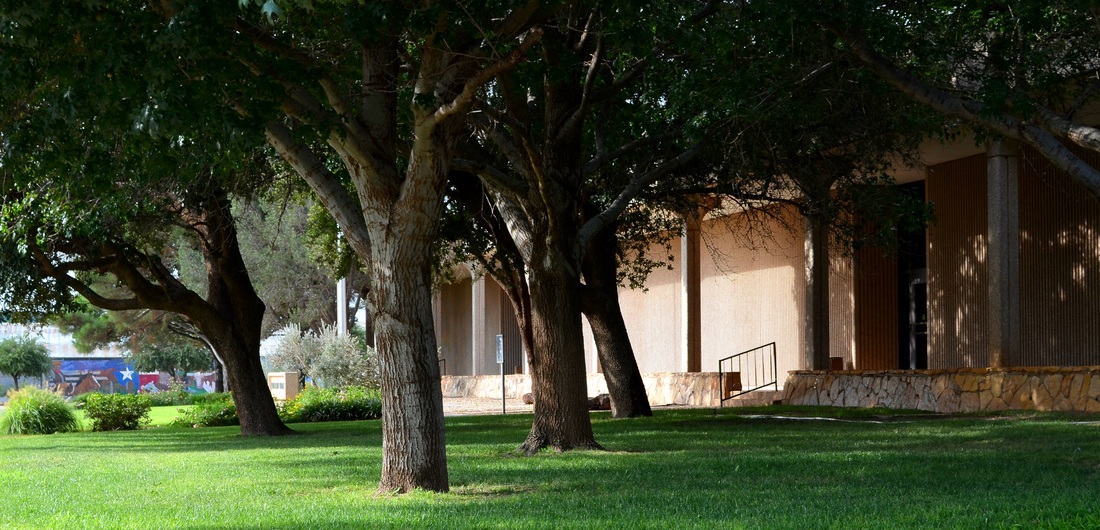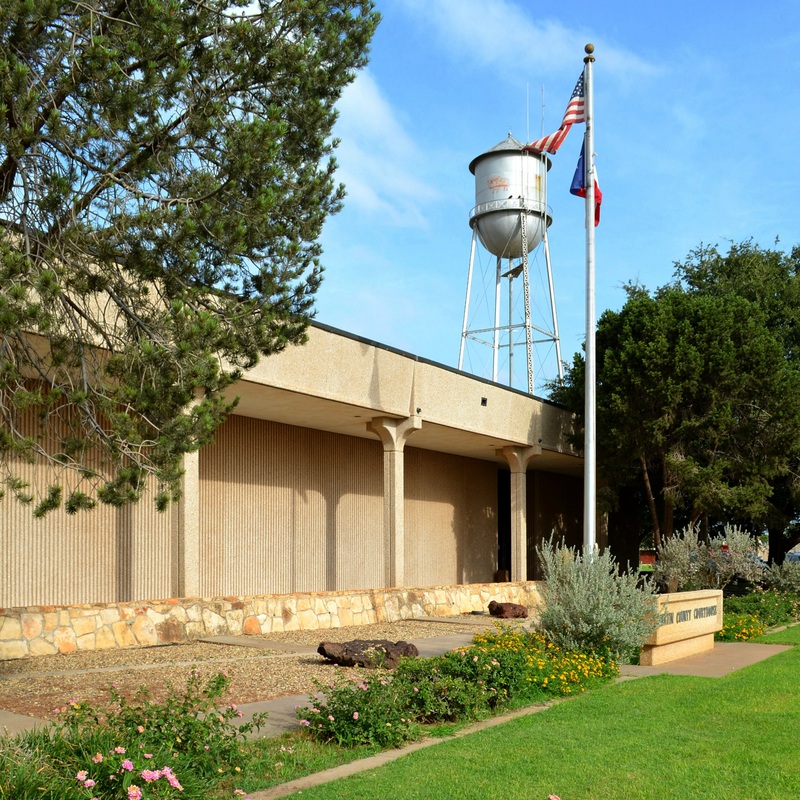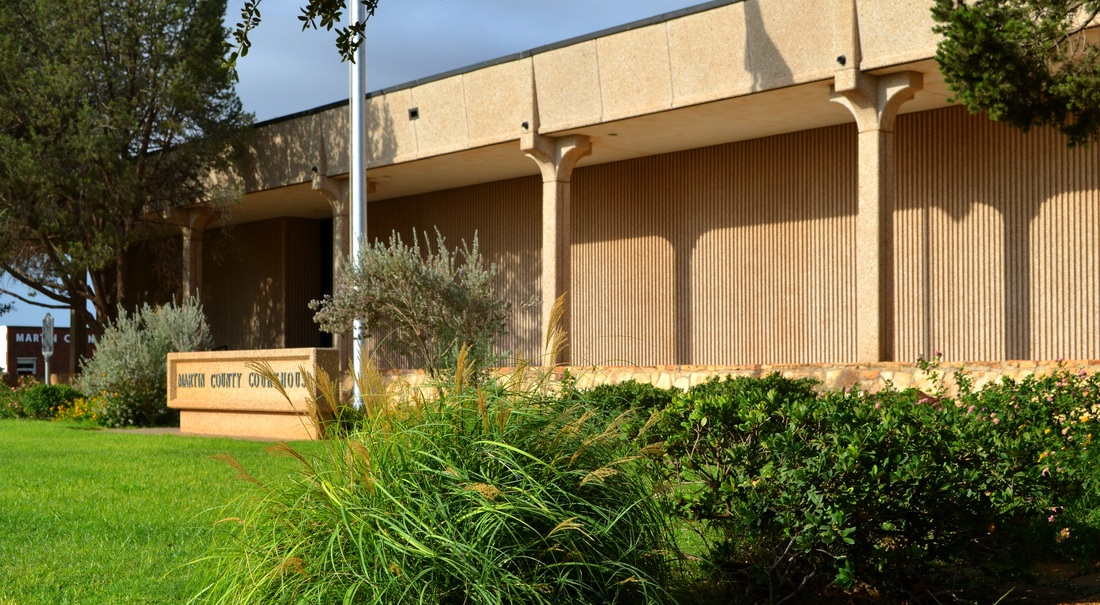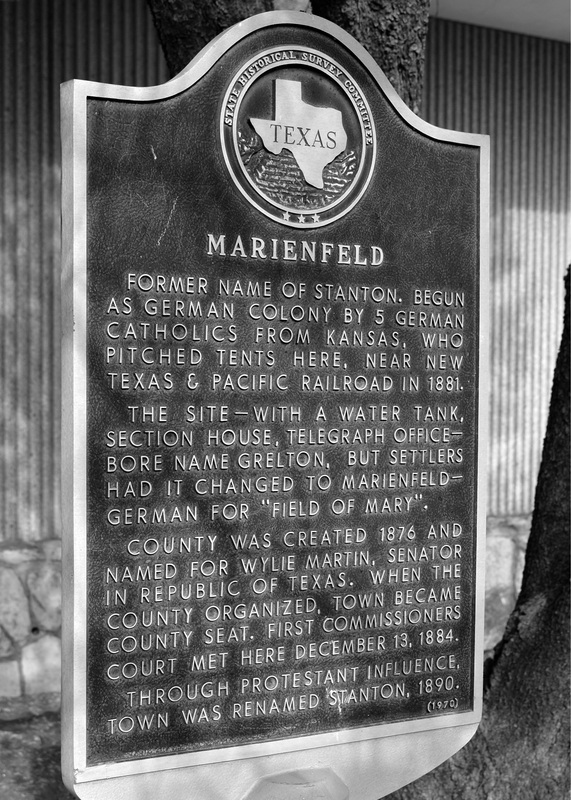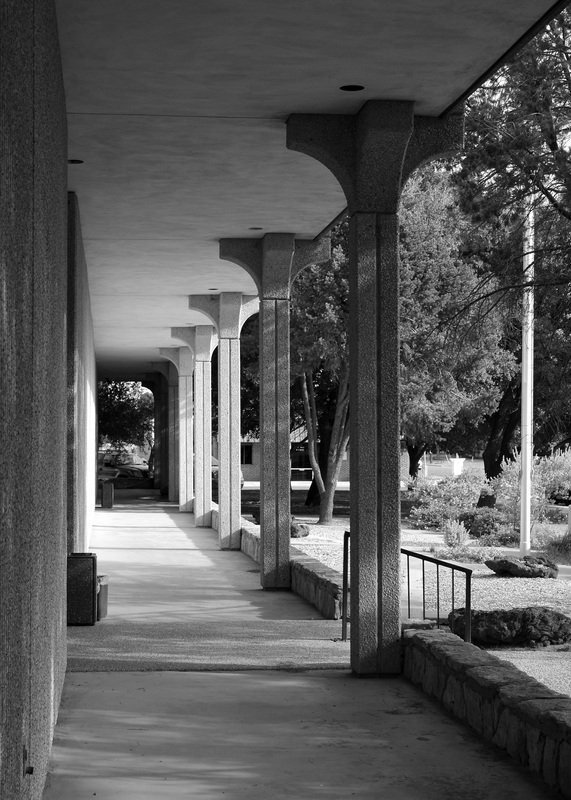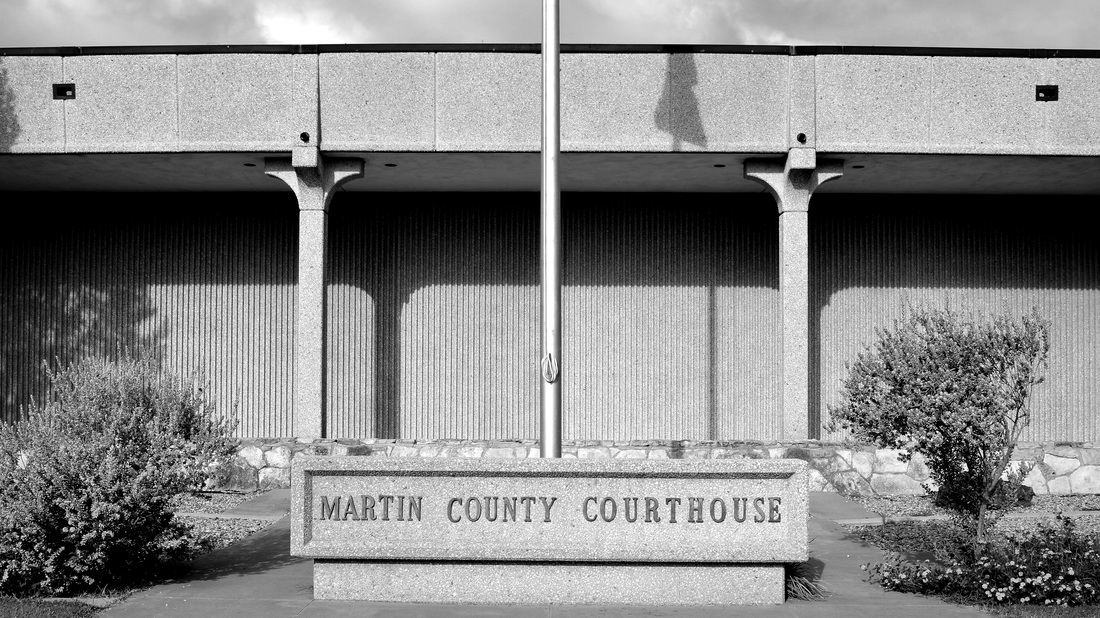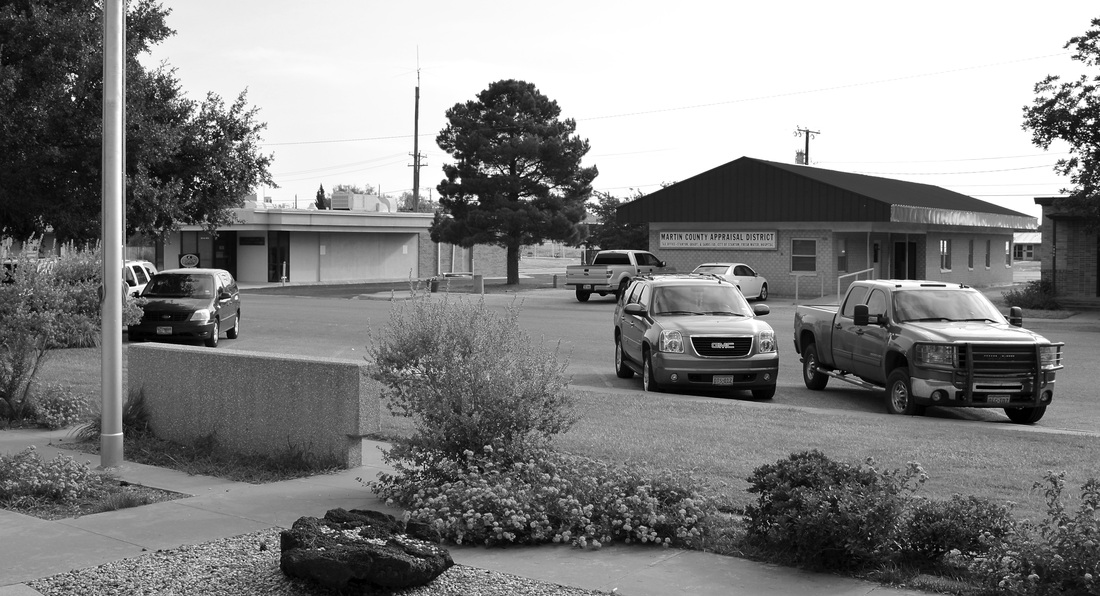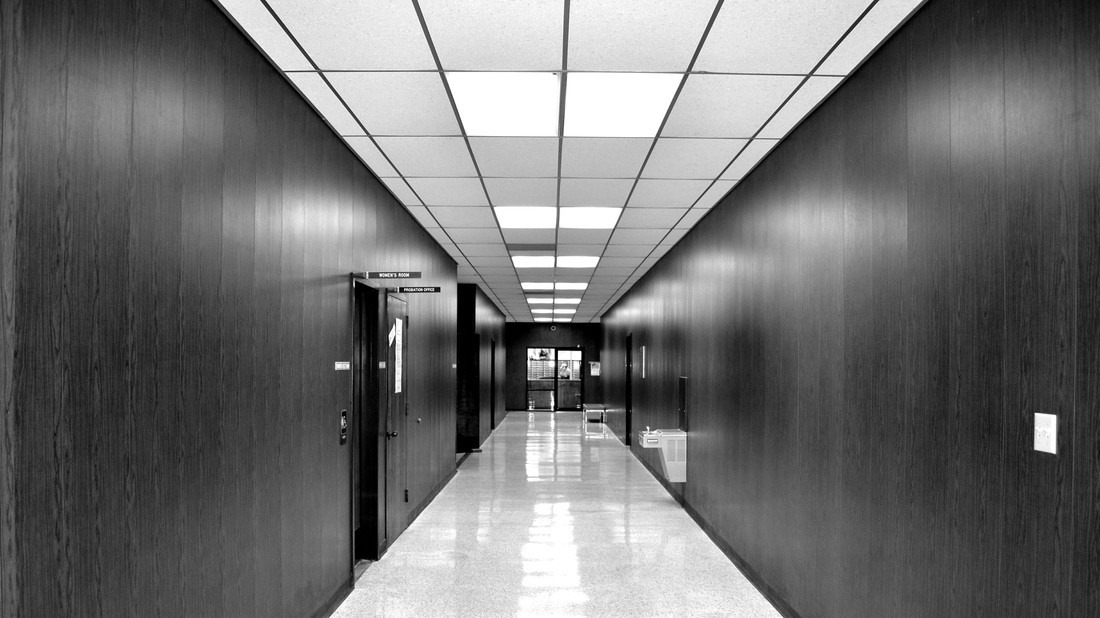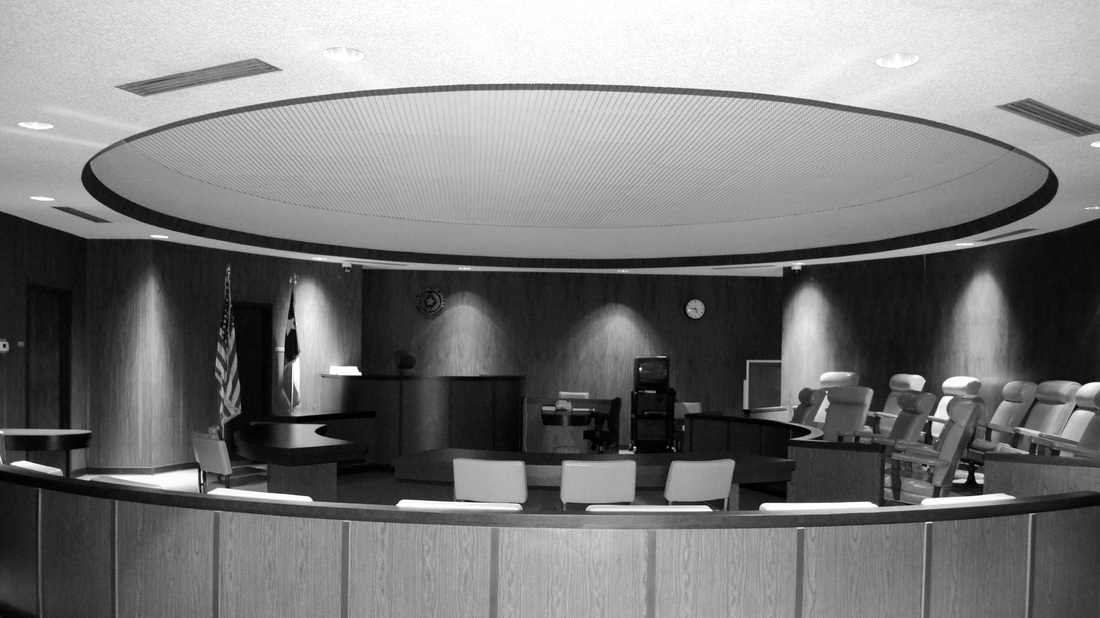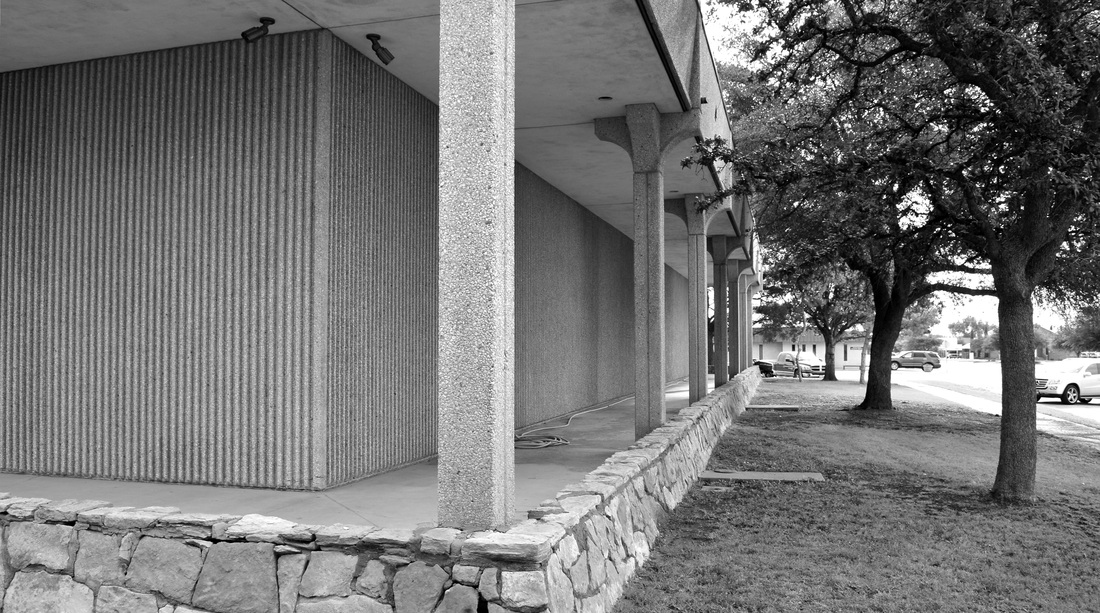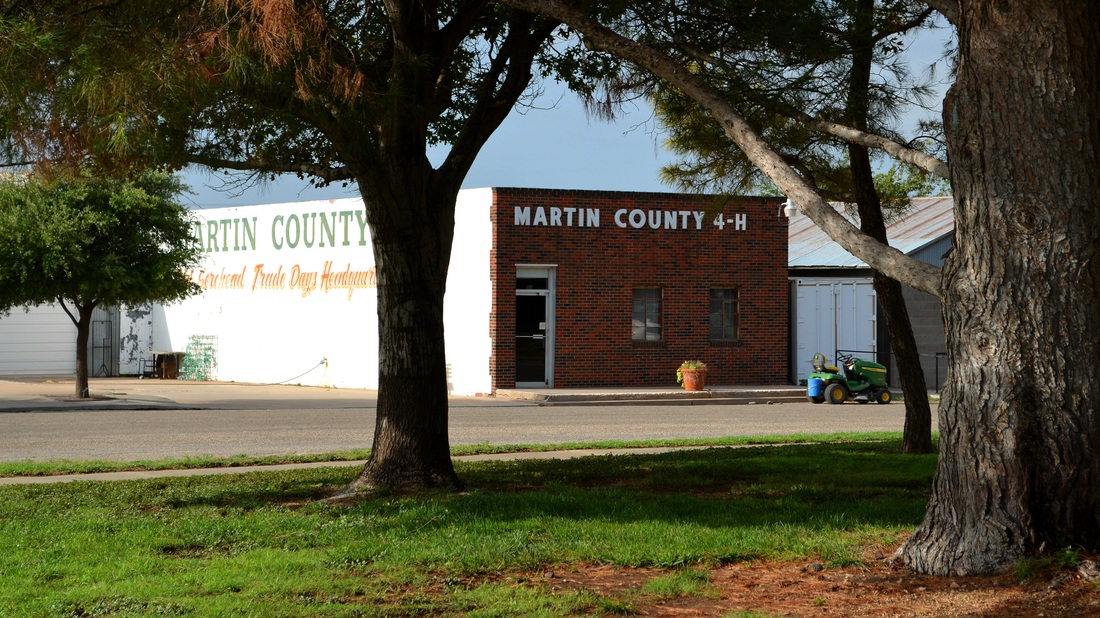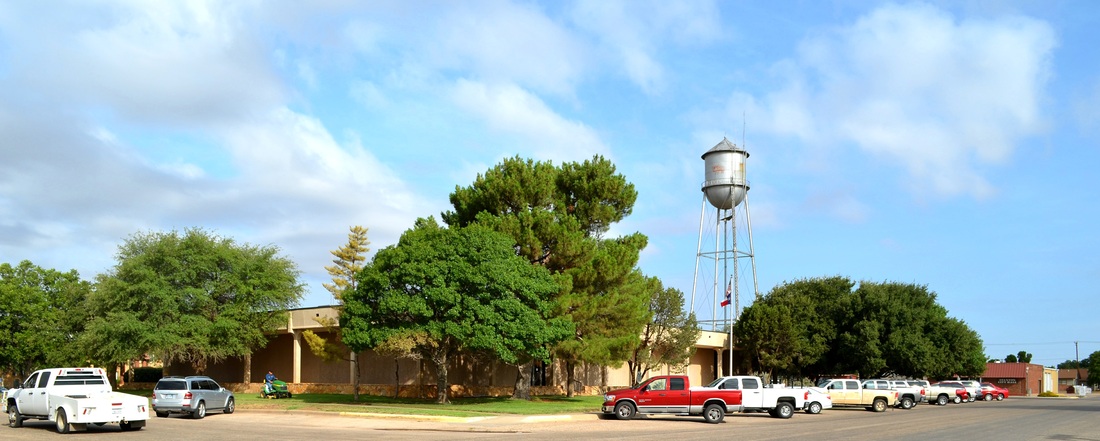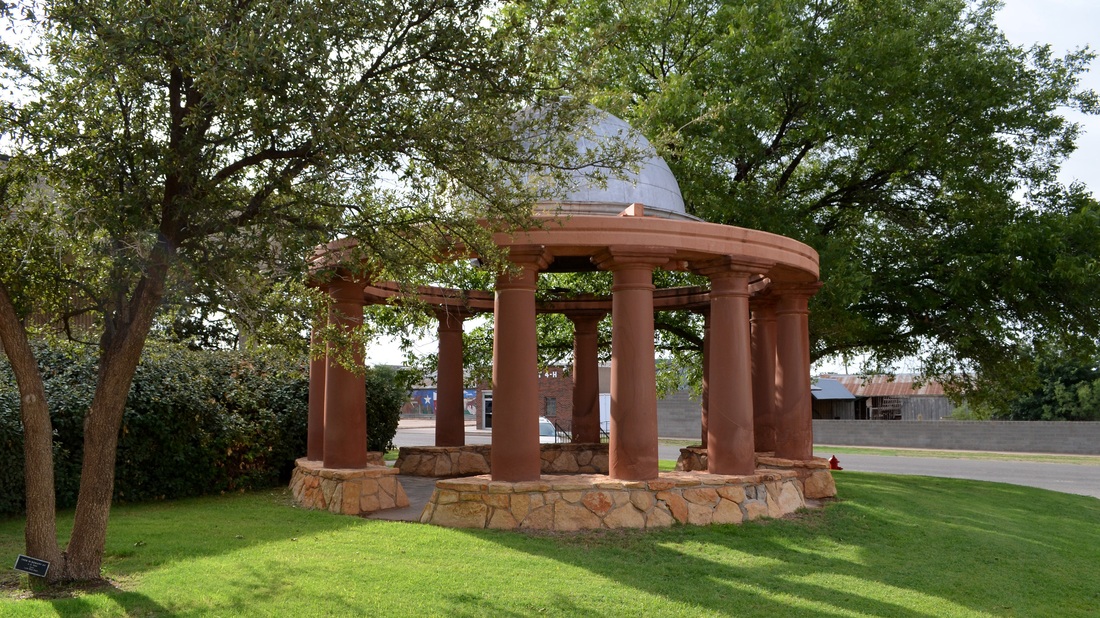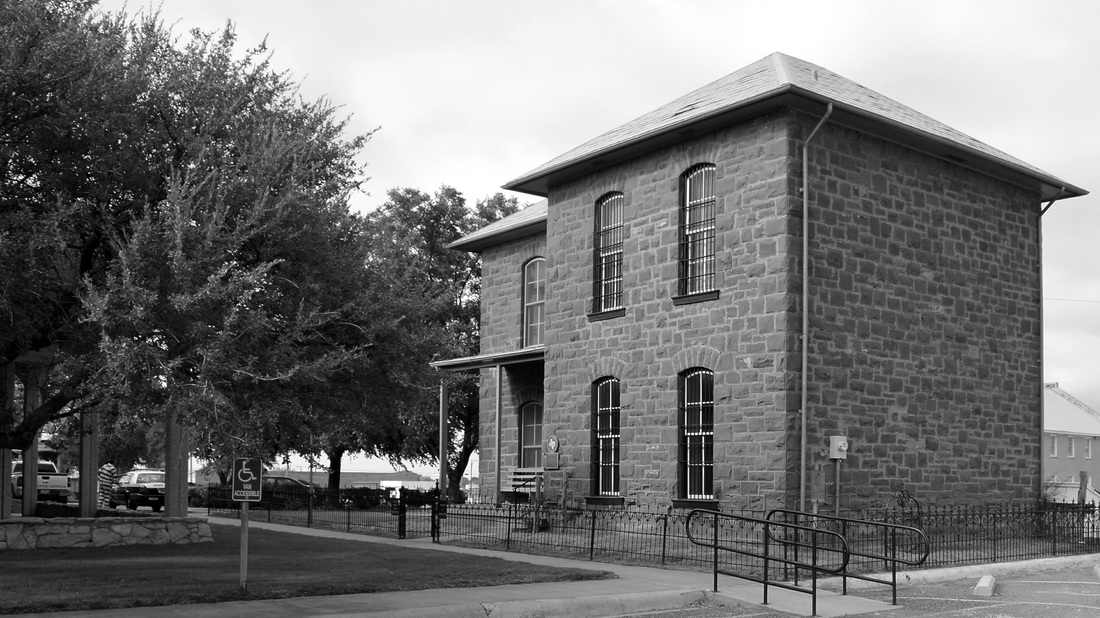159 of 254 Martin County Courthouse, Stanton, Texas. County Population: 4,799
|
"Comanche Indians displaced Lipan Apaches in the region in the mid-eighteenth century and were in turn forced out by the United States Army after the Civil War. Martin County was formed on August 21, 1876, from Bexar County and named for Wylie Martin, one of Stephen F. Austin's Old Three Hundred colonists. Martin County was attached to Mitchell County for administrative purposes for five months and then attached to Howard County until 1884, when the county was reduced to its present size and organized with Mariensfield (now Stanton) as the county seat. The first white settlement in what is now Martin County was Grelton (later known as Mariensfield), which was established in 1881 by John Konz and his family under the sponsorship of the Texas and Pacific Railway. Railroad promotion was a key element in attracting settlers to West Texas. "It is emphatically the country for the poor man," urged one railroad brochure. "No matter how poor a man may be, if he has health he may easily become the possessor of independent wealth in a few years.
"Immigration to the area intensified after Konz encouraged a group of Carmelite priests from Anderson County to move to Martin County to establish a monastery. The name of the original settlement, Grelton, was changed to Mariensfield (Field of Mary) by German settlers from Anderson County." William R. Hunt and John Leffler, "MARTIN COUNTY," Handbook of Texas Online |
I visited Martin County and photographed the courthouse in Stanton on July 27, 2012.
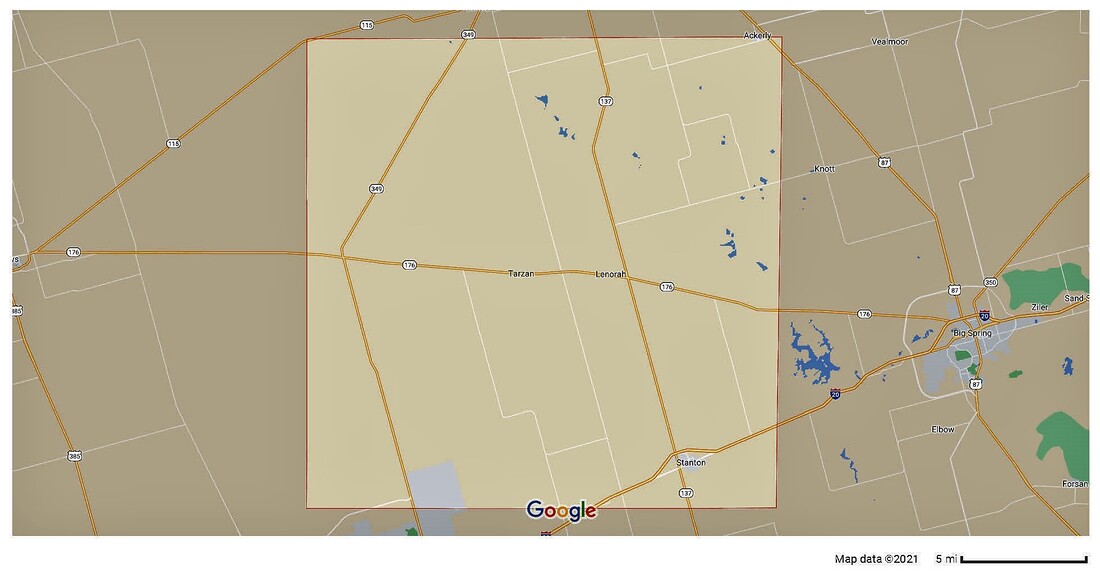
"The cell block of this jail was originally included in the 1885 Martin County Courthouse, built the year after the organization of Martin County when Stanton was known as Marienfeld. When the courthouse was torn down following a 1908 bond election, the cells were retained as the nucleus of this rock jail building. Completed that same year, it included living quarters for the sheriff's family. It later served as a library and museum." Recorded Texas Historic Landmark, 1982
